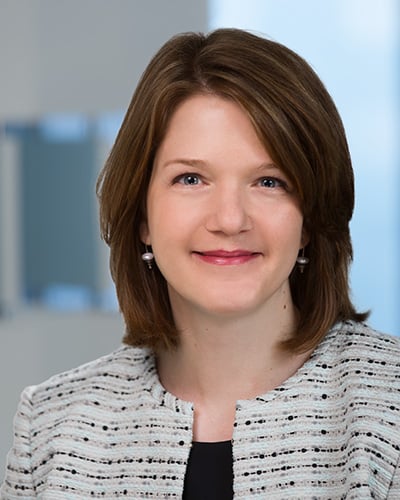The HHS Office of Inspector General (OIG) has released a favorable advisory opinion on physician ownership. The decision should be good news for some manufacturers of innovator medical devices—specifically, companies in which physician-inventors have received ownership interests in exchange for their product development contributions, but whose orders represent only a limited proportion of the companies’ sales—and the health systems, hospitals and ambulatory surgery centers (ASCs) who are the potential customers.
Ropes & Gray represented the Requestors in the advisory opinion process. This Alert summarizes the key elements of the advisory opinion, and discusses some likely implications.
AO 22-07 represents the first time OIG has applied to a specific set of facts the principles announced in its 2013 Special Fraud Alert on Physician-Owned Entities (POD SFA), which described characteristics that, in OIG’s view, make physician-owned distributors, or “PODs,” “inherently suspect” under the Federal Health Care Programs Anti-kickback Statute (AKS). The opinion is addressed to a maker of physician-ordered medical devices used in surgeries performed by the ordering physicians (Company), and the three orthopaedic surgeons who, for purposes of the advisory opinion, OIG considered to have ownership interests in the Company (collectively, Requestors). OIG concluded that the physician ownership at issue presented a low risk of fraud and abuse under the AKS, and accordingly that it would not impose sanctions.
This advisory opinion is of particular importance to legitimate medtech innovators, because it serves to clarify that the POD SFA should not be read to mean that physician ownership of a medical device maker, without more, presents a significant risk under the AKS. Instead, the opinion describes circumstances in which a medical device manufacturer, even a maker of physician-preference items with majority physician ownership, nevertheless should not be considered a suspect POD.
While formally applicable only to the Requestors themselves, the analysis in the advisory opinion may open doors for medical device innovators that in recent years may have found themselves shut out of some hospitals simply because they have owners who are physicians.
Conversely, the advisory opinion confirms the core tenets of the POD SFA, and accordingly will provide no comfort for medical device sellers who are merely distributors, or even for purported manufacturers whose business model is to sell substantially on the orders of their physician-owners.
The POD SFA
In the POD SFA, OIG used broad language to define PODs as “any physician-owned entity that derives revenue from selling, or arranging for the sale of, implantable medical devices and includes physician-owned entities that purport to design or manufacture, typically under contractual arrangements, their own medical devices or instrumentation.”1
OIG’s real villains in the POD SFA narrative were the physician-owned distributors that “derive revenue from selling, or arranging for the sale of, implantable medical devices ordered by their physician-owners for use in procedures the physician-owners perform on their own patients.”2 In this scenario, the “distributor” added no value to the transaction—or at most, took over functions traditionally performed by manufacturer employees or independent sales agents who did not order (or have the ability to order) the products themselves3—but the physician-owners profited from each order, creating incentives for over-utilization, inappropriate product choice, and resulting harm to patients and to competition. However, OIG recognized that the same abuses could be present if the POD owned the FDA clearance for a knockoff product, and contracted out the manufacturing, so that it could claim to be not simply a distributor, but a manufacturer.
Accordingly, OIG qualified its broad definition of POD in the POD SFA with a list of characteristics, many of which it had previously identified,4 that indicate when an entity so defined should be viewed as “inherently suspect.” These include:
- The size of the investment opportunity offered to each physician varies with the expected or actual volume or value of devices used by the physician;
- Distributions are not made in proportion to ownership interests, or physician-owners pay different prices for their ownership interests, because of the expected or actual volume or value of devices used by the physicians;
- Physician-owners condition their referrals on the purchase of the POD’s devices through coercion or promises, or by requiring an exclusive purchasing arrangement;
- Physician-owners are required, pressured, or actively encouraged to refer, recommend or arrange for purchase of the POD’s devices, or threatened with negative repercussions for failing to use the POD’s devices for their patients;
- The POD retains the right to repurchase an physician-owner’s interest for failure to refer (including through relocation or retirement);
- The POD is a shell entity that does not conduct appropriate product evaluations, maintain or manage sufficient inventory in its own facility, or employ or otherwise contract with personnel necessary for operations;
- The POD does not maintain continuous oversight of all distribution functions;
- The physician-owners fail to disclose their ownership interest to hospital or ASC customers.
Notably, it is arguable that many of these suspect characteristics may be avoided by intelligent structuring, and in the years following the POD SFA, a cottage industry grew up to “certify” “ethical PODs” that did not have, or could plausibly claim not to have, these features,5 although no such “epod” has ever received a favorable advisory opinion. Moreover, the POD SFA also identified several POD-specific suspect characteristics that inhere in the business model of what should be considered a suspect POD, and thus could not be so easily certified away, including:
- The POD exclusively (or by logical extension, primarily) serves its physician-owners’ patient base;
- The physician-owners:
- are few in number, such that the volume or value of a particular physician-owner’s recommendations or referrals correlates closely to that physician-owner’s return on investment; or
- alter their medical practice after or shortly before investing in the POD (for example, by performing more surgeries or more extensive surgeries, or by switching to using their POD’s device on an exclusive, or nearly exclusive, basis); or
- are the sole (or nearly the sole) users of the devices sold or manufactured by their PODs, selected because they are in a position to generate business through their referrals.
Following release of the POD SFA, in an abundance of caution, many health systems—appropriately seeking to protect themselves from potential AKS liability, and themselves and their patients from the potential abuses of the suspect POD business model—reacted by adopting bright line rules that severely restricted, and in some cases prohibited, purchases from medtech vendors that had any physician-owners, without a searching inquiry into the presence or absence of the suspect characteristics.6 This placed innovators, like the Company, at a competitive disadvantage, especially against large publicly traded companies, which most hospital policies have treated as exempt from their POD restrictions.
This advisory opinion addresses this plainly unintended consequence of the POD SFA.
The Requestors and the Company
The Requestors are the Company and three orthopaedic surgeons (the Physicians), whom OIG treated as owners by virtue of being in a position to benefit from family trusts that hold the direct ownership interests. The Physicians also belong to a medical group that includes other physicians who are not owners, but who use the Company’s products. The Company was founded by one of the Physicians (Dr. A) to develop into commercial medical devices a line of orthopaedic surgical products that he invented. Dr. A is the Company’s Chief Scientific Officer and continues to develop his technologies into medical devices that the Company sells.
In return for Dr. A’s contribution of this substantial portfolio of proprietary technology, the Company granted the majority ownership interest and preferential voting rights that OIG treated as ownership interests of the Physicians. The remaining owners in the Company are executives or former executives. There are no other physicians or other health care professionals with ownership interests.
The Advisory Opinion
In this advisory opinion, OIG essentially determined that, despite the majority ownership interests of the Physicians, the Company was not suspect as a POD, because none of the suspect characteristics of PODs that motivated the POD SFA were present. In particular, OIG noted:
- The Physicians, and the other members of their medical group, are not the sole or even primary users of the Company’s products, and generate a very limited and steadily decreasing amount of the Company’s business;
- There is no requirement to make or maintain any level of referrals to hold the ownership interests, and no repercussions exist for not using the Company’s products (e.g., no divestiture requirements or Company repurchase rights);
- Profit distributions are based only on ownership percentages (and as an added safeguard, the Company will reduce any profit distributions to the trusts by the amount of revenue resulting from orders from the Physicians and the medical group to which they belong);
- Patients and purchasers are informed of the ownership interests;
- The Physicians may order Company products for their own surgeries and may recommend Company products to others, but will not otherwise attempt to influence hospitals or ASCs to purchase Company products, and will not condition referrals on the purchase of Company products via shifting or threatening to shift their business or requiring minimum or exclusive purchase arrangements;
- The Company is a legitimate manufacturer, not a shell that doesn’t conduct appropriate evaluations, manage inventory, or employ or contract with appropriate personnel.
Perhaps the key elements of the business model that these features add up to are that (i) physician ownership does not appear suspect in the first place—on its face it seems justified by the in-kind contribution of bona fide technology—and (ii) revenue from the orders of the physician-owners has been steadily decreasing, and falls well below what OIG’s safe harbor regulations would otherwise deem a reasonable amount; the AKS small investment safe harbor (for which OIG stated the arrangement did not qualify apparently only because of the majority ownership interest held by the Physicians) would allow up to 40% of revenue to be generated by physician-owners.
Implications
In summary, AO 22-07 may provide the opportunity for at least a modest course correction by the commendably compliance-conscious health systems, hospitals, and ASCs that have taken seriously the lessons of the POD SFA. The key message of the POD SFA to device makers was:
- don’t build a business model that is dependent on sales ordered by the physician-owners; the “bad” intent is easy to infer, and the potential for abuse is obvious.
The corollary message to the hospital and ASC customers was:
- and be wary of purchasing from such companies, since the AKS applies to givers and receivers of remuneration intended to induce referrals.
The main clarification of the advisory opinion is:
- but by itself, physician ownership of a medical device vendor need not preclude compliance-conscious health care providers from purchasing products from such a company;
- in particular, the mere fact that physicians involved in the development and launch of innovative medical device products (even products that are physician preference items) are among the owners of a bona fide manufacturer that undertakes to develop and market those products broadly, and well beyond the orders of the physician-owners, should not deter customers from dealing with such a company.
The opinion also may provide some guidance about the right way for physician-inventors and small companies to commercialize innovative medical technologies. Because of the difficulty in attracting investment capital to develop and commercialize disruptive medical products, innovators may first have to seek investment from physicians who believe in the technology and, correspondingly, will initially be its primary users. Although the long-term trajectory of such a company may be intended to, and could, parallel that of the Company in the advisory opinion, in the short term a large percentage of product utilization might derive from those physician-owners.
This advisory opinion falls short of removing the AKS risk from such ventures. However, in concluding that the Company “does not exhibit the suspect characteristics sometimes associated with physician-owned entities related to the legitimacy of the business,”7 OIG identified the fact that Dr. A received his ownership interest in exchange for invention and development of the Company’s product portfolio. Another key fact was that the percentage of orders from the Physicians and their medical group has been steadily decreasing “as the company’s sales have expanded nationally and internationally.” These observations suggest that the more innovative the product, and the better the business plan for expansion, the more the arrangement is likely to be seen as a legitimate one, and the lower the likelihood that the POD SFA should be fertile ground for AKS liability.
Ropes & Gray maintains a website of resources on PODs, and we will continue to monitor the issue. If you have questions, please do not hesitate to contact one of the authors or your usual Ropes & Gray advisor.
- Office of Inspector General, Special Fraud Alert: Physician-Owned Entities (March 26, 2013). https://oig.hhs.gov/documents/special-fraud-alerts/867/POD_Special_Fraud_Alert.pdf.
- Id. (emphasis added).
- See, e.g., Bal, Brenner, “Physician-owned distributorships face increased scrutiny,” Orthopedics Today, 4/1/2013 (“In the traditional supply business model, medical devices are sold to hospitals and surgical centers directly by manufacturers, with employee representatives or independent distributors as intermediaries.”).
- OIG has several times issued guidance on physician ownership, including in “Special Fraud Alert: Joint Venture Arrangements” (August 1989), reprinted at 59 Fed. Reg. 65,372, 65,374 (Dec. 19, 1994); Letter from Vicki Robinson, Chief, Industry Guidance Branch, Department of Health and Human Services, OIG, Response to Request for Guidance Regarding Certain Physician Investments in the Medical Device Industries (Oct. 6, 2006).
- See, e.g., http://aasdonline.org/aasd-media-backgrounder/.
- See, e.g., Ayala, “Medicare advisors consider tighter rules on doctor-owned medical distributors,” The Hill 4/18/2017 (“[S]ome hospitals have set up barriers to avoid anti-kickback entanglements with [physician-owned] device distributors”); Swann, “Docs Owning Device Companies Have Conflict of Interest: Senate Panel,” Bloomberg Law News 5/11/2016 (noting “the trend of hospital systems phasing out purchasing devices from PODs”); Bal, Brenner, “Physician-owned distributorships face increased scrutiny,” Orthopedics Today, 4/1/2013 (“In fact, many hospitals have already implemented policies restricting the purchases of medical devices from physician-owned entities.”); Carreyrou, “Senators Request Probe of Surgeons,” Wall Street Journal 6/9/2011 (citing a hospital system that “decided last month to stop doing business with such entities, telling its staff in a memo that PODs are “inconsistent with the spirit and intent” of the AKS).
- Emphasis added.
Authors

Stay Up To Date with Ropes & Gray
Ropes & Gray attorneys provide timely analysis on legal developments, court decisions and changes in legislation and regulations.
Stay in the loop with all things Ropes & Gray, and find out more about our people, culture, initiatives and everything that’s happening.
We regularly notify our clients and contacts of significant legal developments, news, webinars and teleconferences that affect their industries.


